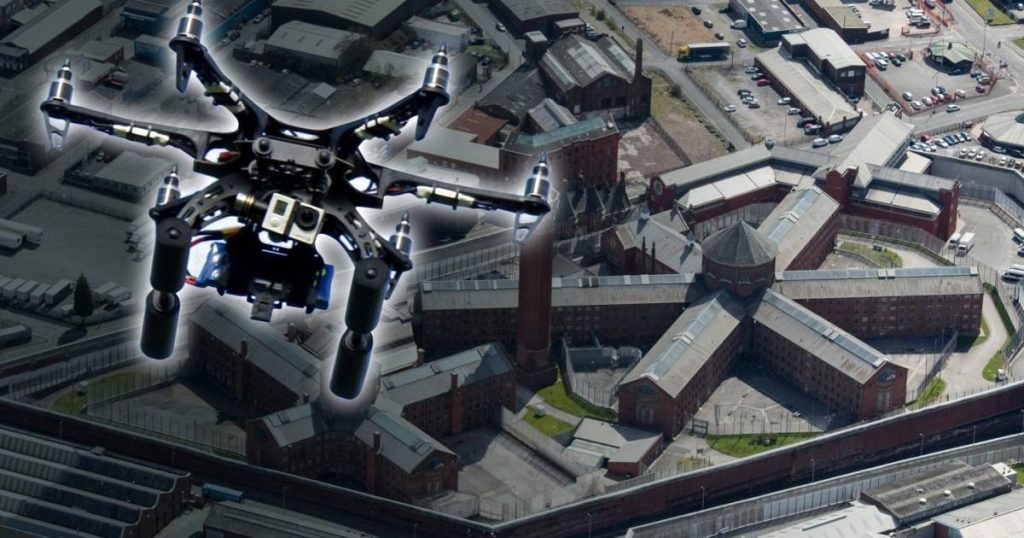The Growing Threat of Drone-Delivered Contraband in UK Prisons
The UK prison system is facing a growing security crisis fueled by the increasing use of drones to deliver contraband into prisons. Chief Inspector of Prisons Charlie Taylor has labeled this issue a national security threat, highlighting the ease with which organized crime groups can exploit vulnerabilities in prison security to supply illicit items, including drugs, to even the most dangerous inmates. This burgeoning problem undermines prison order, jeopardizes the safety of staff and prisoners, and ultimately poses a risk to the public. The inability of authorities to control the airspace above prisons like HMP Manchester and HMP Long Lartin effectively cedes control to criminal networks, allowing them to operate with impunity and fueling a thriving illicit economy within prison walls.
Mr. Taylor’s report paints a stark picture of the scale of the problem. He criticizes the dilapidated state of security measures, citing broken nets and malfunctioning CCTV systems as key factors contributing to the vulnerability of these institutions. The report specifically mentions HMP Manchester, formerly known as Strangeways, where conditions deteriorated so drastically that Mr. Taylor urged the justice secretary to implement emergency measures. The situation extends beyond Manchester and Long Lartin; similar drone-related incidents have been reported at HMP The Mount in Hertfordshire and HMP Garth in Lancashire, the latter being described as resembling an "airport" due to the frequency of drone activity.
The ingenuity employed by inmates to receive these illicit deliveries further underscores the severity of the issue. Reports reveal that prisoners at HMP Manchester have resorted to burning holes in their cell windows using kettle filaments to facilitate the transfer of contraband. Independent Monitoring Boards (IMB) reports indicate that such drastic measures are sometimes unnecessary, as the decaying infrastructure of some prisons already presents easily exploitable openings. This combination of external criminal activity and internal resourcefulness creates a complex challenge for prison authorities.
The consequences of this unchecked flow of contraband are far-reaching. The availability of drugs within prisons fuels violence, undermines rehabilitation efforts, and fosters an environment of lawlessness. It compromises the safety of staff, who face increasing risks from inmates under the influence of drugs or emboldened by access to illicit items. Moreover, it allows dangerous criminals, including those classified as high-risk category A, to maintain their criminal networks from within prison walls, potentially directing activities on the outside and posing a continuing threat to society.
The failure to adequately address this issue represents a serious lapse in security. Mr. Taylor’s urgent call for action emphasizes the need for a coordinated response from the Prison Service, police, and other security agencies to reclaim control of the airspace above prisons. This includes investing in robust counter-drone technology, improving the physical security of prison facilities, and strengthening intelligence gathering to disrupt the organized crime groups orchestrating these operations. Failure to act decisively will only exacerbate the problem, allowing it to metastasize and further undermine the integrity of the prison system.
Addressing this challenge requires a multi-faceted approach. This involves not only enhancing security measures but also addressing the root causes that drive demand for contraband within prisons. Improving conditions, providing meaningful opportunities for rehabilitation, and tackling issues like overcrowding can help reduce the incentive for inmates to seek out illicit goods. A comprehensive strategy that combines enhanced security with improved internal conditions is essential to effectively combat this growing threat and ensure the safety and security of both prisons and the wider community.




